 |
|||||||||
 |
 |
 |
 |
 |
 |
 |
 |
 |
|

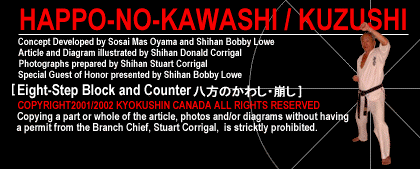
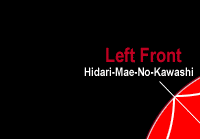
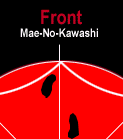
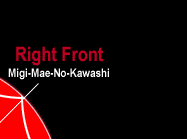
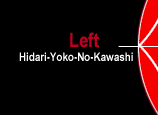
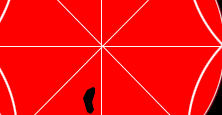
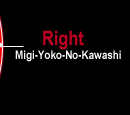
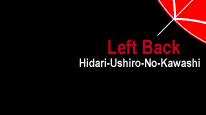
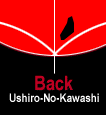
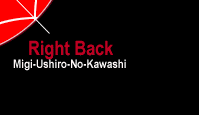
The Postures of Eight Directions for Dodging, Countering & Off Balancing
 Through out Kyokushin Karate the concept of Happo kuzushi is continually used. A frequently ignored and
misunderstood concept, it is so fundamental to budo karate and the successful execution of its techniques
that its importance cannot be over-estimated or over-emphasized.
Through out Kyokushin Karate the concept of Happo kuzushi is continually used. A frequently ignored and
misunderstood concept, it is so fundamental to budo karate and the successful execution of its techniques
that its importance cannot be over-estimated or over-emphasized. This concept is found in all the kumite, goshin jitsu and kata of Kyokushin Karate. An understanding of how it got into Kyokushin Karate is important in understanding its place and its integration with circle and point theory. The happo kuzushi is in fact the simplest, while being the most complex expression of the circle & point theory in the movements of the body, which is the foundation of Kyokushin Karate.
This particular area of training came as a result of Sosai’s training in daito-ryu aiki-jutsu, also known as Takeda Ryu, and is mentioned in “This is Karate” - Chapter 12; Oyama, Masutatsu, ? 1965, Japan Publications Trading Company”
The happo kuzushi is an integral part of Kyokushin Karate, and the understanding, practice & integration of it cannot be separated from the kyokushin karate as the heart and lungs can not be separated from the human body without the body dying. This concept is used in all Japanese martial arts. So it is important for the student to study it thoroughly until it is mastered and an understanding of the theory is developed; otherwise the student will find himself or herself confused and totally frustrated when trying to move outside of the front/back linear movement of technique attempted in training.
 At the beginner's level it is best to think of the Happo in one dimension only, literally a pattern on the
floor in the eight basic directions. But in fact there are eight directions for each dimension so that at
higher belt levels need to think in 3 dimensions, 3 levels for each basic direction. However, knowing the
basic directions is not enough to be able to utilize this concept in practice. It must be integrated with
the concept of ma-ai, the spatial relationship of position, movement and time in relation to the opponent.
A clear understanding and ability to judge distance is a necessary part of the eight directions to allow
the defender to not only block or avoid an attack but also counter effectively against it.
At the beginner's level it is best to think of the Happo in one dimension only, literally a pattern on the
floor in the eight basic directions. But in fact there are eight directions for each dimension so that at
higher belt levels need to think in 3 dimensions, 3 levels for each basic direction. However, knowing the
basic directions is not enough to be able to utilize this concept in practice. It must be integrated with
the concept of ma-ai, the spatial relationship of position, movement and time in relation to the opponent.
A clear understanding and ability to judge distance is a necessary part of the eight directions to allow
the defender to not only block or avoid an attack but also counter effectively against it. At the most advanced levels we must progress to thinking of eight directions in 3 dimensions plus time. This means that there are several dynamic dimensions or shifts of direction of the attacker & defender;
1. Jodan kamae to jodan kamae;
2. Jodan kamae to chudan kamae;
3. Jodan kamae to gedan kamae;
4. Chudan kamae to jodan kamae;
5. Chudan kamae to chudan kamae;
6. Chudan kamae to gedan kamae;
7. Gedan kamae to jodan kamae;
8. Gedan kamae to chudan kamae;
9. Gedan kamae to gedan kamae;
Within each of these dynamic shifts of dimensions vertically, they must then be applied directionally. For example if we start at the movement from jodan kamae, we can move then to;
1. Jodan mae kuzuchi;
2. Chudan mae kuzushi;
3. Gedan mae kuzushi;
4. Jodan hidari yoko kuzushi;
5. Chudan hidari yoko kuzushi;
6. Gedan hidari yoko kuzushi;
7. Jodan migi yoko kuzushi;
8. Chudan migi yoko kuzushi;
9. Gedan migi yoko kuzushi;
10. Jodan ushiro kuzushi;
11. Chudan ushiro kuzushi;
12. Gedan ushiro kuzushi;
13. Jodan hidari mae kuzushi;
14. Chudan hidari mae kuzushi;
15. Gedan hidari mae kuzushi;
16. Jodan migi mae kuzushi;
17. Chudan migi mae kuzushi;
18. Gedan migi mae kuzushi;
19. Jodan migi ushiro kuzushi;
20. Chudan migi ushiro kuzushi;
21. Gedan migi ushiro kuzushi;
22. Jodan hidari ushiro kuzushi;
23. Chudan hidari ushiro kuzushi;
24. Gedan hidari ushiro kuzushi;
- both from migi & hidari. This makes for 48 permutations from jodan kamae, 48 permutations from chudan kamae, and 48 permutations from gedan kamae, totalling 152 options for movement. This is only for 16 counts of the happo-no-kuzushi, The other 16 counts then are incorporated into the movements, totaling a further 152 options, for a total number of options for movements of 304 possible perutations for directional/dimensional movement in this exercise.
When the student has mastered the movements, happo-no-kuzushi must be integrated with several psychological and physiological concepts to be successful:
1. Muso-uchi, the ability to sense or anticipate an opponent's movement and intentions, thus the student is then able to know their opponent's actions before they happen.
2. Setsuzoku, or connection, techniques are generally rendered more efficient by preserving a connection between one's centre of mass (HARA) and the outer limits of the movement, or between one's own centre of mass and that of one's partner. Also, Setsuzoku may connote fluidity and continuity in technique. On a psychological level, Setsuzoku may connote the relationship of action-response that exists between oneself and one's partner, such that successful performance of techniques depends crucially upon timing one's own actions and responses to accord with those of one's partner.
3. Mushin - literally "no mind". A state of cognitive awareness characterized by the absence of discursive thought. A state of mind in which the mind acts/reacts without hypostatization of concepts. Mushin is often erroneously taken to be a state of mere spontaneity. Although spontaneity is a feature of mushin, it is not straightforwardly identical with it. It might be said that when in a state of mushin, one is free to use concepts and distinctions without being used by them.
4. Shikaku - literally "dead angle." A position relative to one's partner where it is difficult for him/her to (continue to) attack, and from which it is relatively easy to control one's partner's balance and movement.
5. Shinnyo - "thusness" or "suchness." A term commonly used to denote the character of things as they are experienced without filtering the experiences through an overt conceptual framework. There is some question whether "pure" un-interpreted experience (independent of all conceptualization/categorization) is possible given the neurological/cognitive makeup of human beings. However, shinnyo can also be taken to signify experience of things as empty of individual essences.
6. Zanshin - the state of perfect awareness;
7. Kokyuho – breathing techniques incompassing the 4 basic elements or types of breathing;
Ibuki kokyuho - Powerful breathing - Ki exercise – encompassing 4 distinct Ki exercises;
Ekkinkiko - Tendon transforming Ki exercise;
Senzuikiko - Marrow cleansing Ki exercise;
Daishuyutekiko - Ki moving exercise;
Shoshyutenkiko - Ki exercise to energize the Tokumyaku-kei (Governor meridian) & the Ninmyaku-kei (Conception meridian).
Nogare kokyuho - Restful breathing exercises – encompassing 2 basic elements or types;
Nogare sono ichi (omote) - Short or inner wave breathing;
Nogare sono ni (ura) - Long or outer wave breathing.
Enshin kokyuho - Long slow breathing deep into the abdomine and over an extended period of time for one cycle of inhalation & exhalation. This technique is describe in “The Kyokushin Way” – Oyama, Masutasu - Japan Publishing Co. Copyright 1979
The practice of the Happo-no-Kawashi must be directed and insightful under the the constant correction and direction of the sensei in order for the student ultimately assimilate the happo no kuzuzshi to the point that it become an intregal part of the student’s being. The student must have an inward looking focus so that they can:
Feel what is going on inside their body,
Feel what's going on outside their body as it moves,
Feel what is going on inside their mind as the techniques are performed.
When the student has assimilated the happo no kuzushi an attacker can utilize any attack but will only strike air. The attacker will be unable to attack, as there will be nothing to attack. The student will then have achieved the state of happo biraki. The posture and state of mind is referred to as the “happo biraki”, being open on eight side. There is no attack that can be effective from this position. It is used to provoke the attacker to attack pre-maturally, allowing the defender to take advantage of the unsettled nature of the attack.
COUNT # 1/ 2 / 3 / 4 / 5 / 6 / 7 / 8
